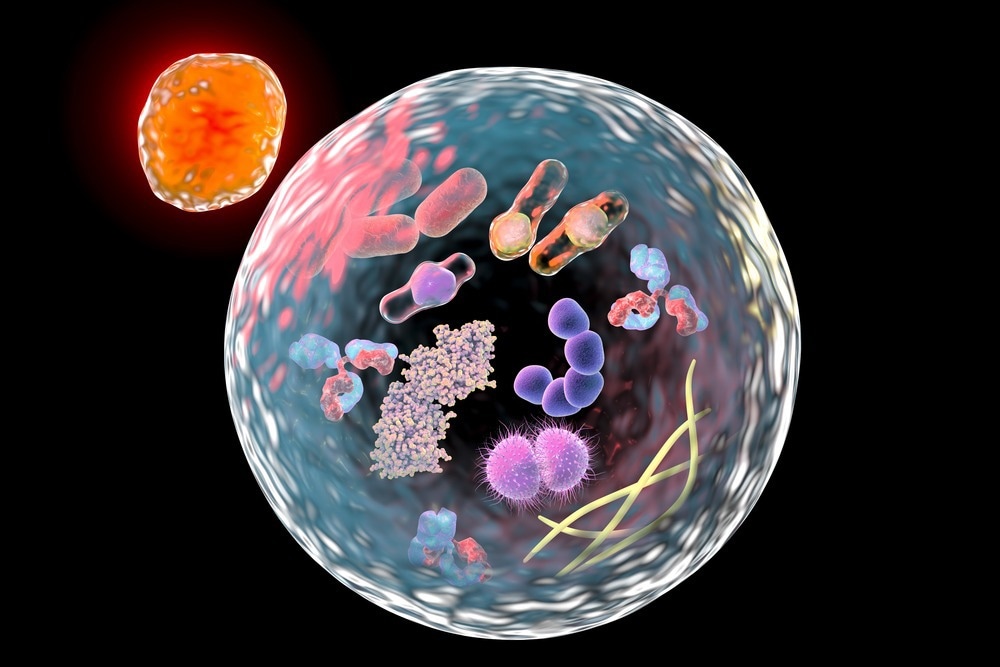Swine acute diarrhea syndrome coronavirus promotes replication by inducing autophagy
A recent iScience study finds that the swine acute diarrhea syndrome coronavirus (SADS-CoV) promotes autophagy to maintain its replication inside host cells. More specifically, the virus downregulates AKT/ mammalian target of rapamycin (mTOR) pathway to induce autophagy.
 Study: Swine Acute Diarrhea Syndrome Coronavirus Induces Autophagy to Promote Its Replication via the Akt/mTOR Pathway. Image Credit: Kateryna Kon / Shutterstock.com
Study: Swine Acute Diarrhea Syndrome Coronavirus Induces Autophagy to Promote Its Replication via the Akt/mTOR Pathway. Image Credit: Kateryna Kon / Shutterstock.com
Background
SADS-CoV is an enveloped, single-stranded, positive-sense ribonucleic acid (RNA) virus belonging to the Coronaviridae family. Other highly pathogenic members of the same viral family include the severe acute respiratory syndrome coronavirus (SARS-CoV), Middle East respiratory syndrome coronavirus (MERS-CoV), and, more recently, SARS-CoV-2.
SADS-CoV is a bat-origin zoonotic coronavirus that was recently discovered in 2017. The virus exhibits potential cross-species transmissibility and is capable of infecting a range of cells derived from pigs, rats, monkeys, and humans. This highlights the need for understanding its host-pathogen interactions to identify potential antiviral therapeutics.
Autophagy is a vital host defense mechanism against invading viruses. This process helps destroy and eliminate viral components through the lysosomal degradation pathway. However, some viruses, such as the Zika virus, Human Papillomavirus (HPV), and herpes simplex virus type 2, have been found to block host autophagy to promote replication and survival.
In the current study, scientists explore the association between SADS-CoV infection and autophagy regulation.
Impact of SADS-CoV infection on autophagy
Cells derived from monkeys and pigs were infected with SADS-CoV-2 and subjected to autophagy analysis at various time points. The modulation of autophagy was assessed by estimating the expression of a vital autophagosome marker LC3-II.
SADS-CoV infection was found to induce the expression of LC3-II at all tested post-infection time points. The highest expression was observed at 24 and 36 hours, depending on the cell type. Furthermore, microscopic analysis confirmed the accumulation of autophagosomes in response to SADS-CoV infection.
To determine whether a replication-incompetent virus can induce autophagy, SADS-CoV was first inactivated by ultraviolet (UV) radiation and subsequently used to infect cells. This experiment revealed that SADS-CoV needs to maintain its replication inside host cells to stimulate the autophagy process.
The impact of autophagy on SADS-CoV replication was assessed by using rapamycin and 3-metyhlademine, which is a well-established inducer and inhibitor of autophagy, respectively. While rapamycin was found to induce both autophagy and viral replication in host cells, an opposite effect was observed in cells treated with 3-methylademine.
These findings indicate that SADS-CoV induces autophagy to facilitate its replication inside host cells during infection.
Mechanism of SADS-CoV-induced autophagy
Autophagy is characterized by the formation of autophagosomes and the subsequent fusion of autophagosomes with lysosomes for the degradation of viral components. While some viruses induce the fusion of autophagosomes with endosomes for survival, some prevent the fusion between autophagosomes and lysosomes, subsequently inhibiting autophagic flux.
A series of experiments conducted to determine the mechanistic details of SADS-CoV-induced autophagy indicated that the virus induces complete autophagic flux to promote its replication. Inhibition of autophagosome-lysosome fusion was found to disrupt viral replication.
Further analysis revealed that SADS-CoV induces autophagy through the ATG5-dependent pathway. ATG5 is a protein required for autophagosome formation. At the molecular level, SADS-CoV inhibited the AKT/mTOR signaling pathway to promote autophagy and maintain replication.
The mTOR signaling pathway plays a crucial role in autophagy initiation. AKT is a serine/threonine kinase that acts as an upstream signaling component of the mTOR pathway to regulate autophagy.
Impact of autophagy inhibition on SADS-CoV replication
The proteomics analysis of SADS-CoV-infected cells was conducted to identify potential antiviral target molecules. This led to the identification of eight differentially expressed proteins related to the PI3K/AKT pathway. Of these proteins, only integrin α3 (ITGA3) exhibited antiviral effects against SADS-CoV replication.
ITGA3 is a cell membrane adhesion protein closely related to autophagy. The overexpression of ITGA3 in SADS-CoV-infected cells caused downregulation of autophagy and viral replication, as well as upregulation of AKT and mTOR activities. In contrast, opposite events were observed following the suppression of ITGA3 in the virus-infected cell.
These findings indicate that ITGA3 prevents SADS-CoV replication by inhibiting autophagy via AKT/mTOR pathway.
Study significance
The current study describes a novel mechanism of SADS-C-V-induced autophagy, which is needed for viral replication and survival inside host cells. Moreover, the study identifies ITGA3 as a potential antiviral molecule that can prevent viral replication by inhibiting autophagy.
- Zeng, S., Zhao, Y., Peng, O., et al. (2022). Swine Acute Diarrhea Syndrome Coronavirus Induces Autophagy to Promote Its Replication via the Akt/mTOR Pathway. iScience. doi: 10.1016/j.isci.2022.105394. https://www.sciencedirect.com/science/article/pii/S2589004222016662
Posted in: Medical Science News | Medical Research News | Disease/Infection News
Tags: Autophagy, Cell, Cell Membrane, Coronavirus, Diarrhea, Herpes, Herpes Simplex, Herpes Simplex Virus, Kinase, Lysosomes, Membrane, MERS-CoV, Molecule, Pathogen, Protein, Proteomics, Rapamycin, Respiratory, Ribonucleic Acid, RNA, SARS, SARS-CoV-2, Serine, Severe Acute Respiratory, Severe Acute Respiratory Syndrome, Signaling Pathway, Swine Flu, Syndrome, Therapeutics, Threonine, Virus, Zika Virus

Written by
Dr. Sanchari Sinha Dutta
Dr. Sanchari Sinha Dutta is a science communicator who believes in spreading the power of science in every corner of the world. She has a Bachelor of Science (B.Sc.) degree and a Master's of Science (M.Sc.) in biology and human physiology. Following her Master's degree, Sanchari went on to study a Ph.D. in human physiology. She has authored more than 10 original research articles, all of which have been published in world renowned international journals.
Source: Read Full Article


